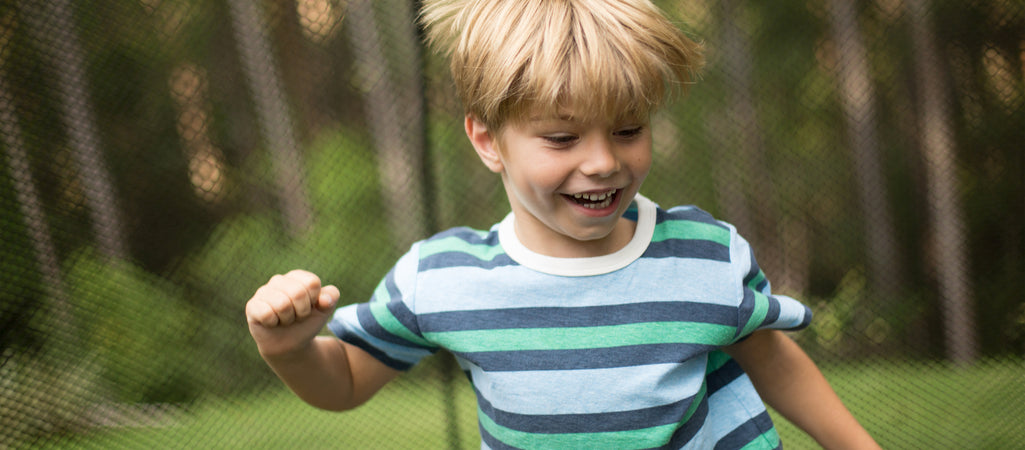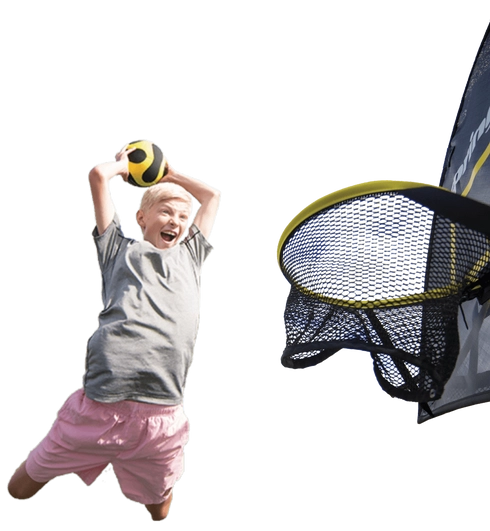5 Benefits of Trampolines for Special Needs Children
min read

Trampolines are fun. That’s a fact! The other fact, that’s even better, is that while you’re having fun, you’re helping to strengthen muscles, develop balance and fine-tune coordination. For children with special needs these benefits can have much more of an impact.
Children with physical disabilities are challenged with movement limitations, which can affect their ability to participate in sport and day to day activities and this can result in a lack of confidence and ultimately the avoidance of participation in mainstream activities.
Rebound therapy is using the trampoline to target motor skill development such as balance while sitting, kneeling, standing and walking; functional transfers such as: rolling and sit to stand; and aerobic activity such as jumping.
Rebound Therapy can provide multiple benefits including the development and improvement of:
- Strength of bones and limbs
- Improve Co-ordination, Posture & Balance
- Build Self-confidence
- Gain + Improve Fitness
- Stimulation of the Senses
Additionally, it can help with:
- Communication
- Patience
- Independence
- Muscle tone
- Reaction speed
- Self-image
- Eye contact
- Relaxation
- Freedom of movement
- Sense of achievement
- Spatial awareness
- Body awareness
- Social awareness
- Consideration of others
- Height and depth perception
- Fun and enjoyment
1. Strength of limbs + bones
Using a trampoline is effective in preventing osteoporosis and other bone degenerative diseases. There are two main ways that trampolines help to improve bone health. One is purely from being outdoors and getting a natural dose of Vitamin D through sun exposure throughout the day. The other way is purely from bouncing. Bones have the ability of becoming stronger under stress and weaker when there is no stress. The best way to do this is to work against gravity. When you jump on a trampoline, the entire body shares the impact. Unlike most exercises, rebounding strengthens the bones and muscles without the risks of injuries to weight bearing joints such as the knees, ankles, hips and back.
2. Improve Co-Ordination, Posture and Balance
Regular rebounding conditions the body to react quickly and the amount of agility, balance and coordination required is high. Light bouncing and rebounding can help kids tune in to their bodies, improving their coordination and dexterity in different ways. Trampolines can also help them improve their posture and balance, giving them more control of their bodies and helping them understand their physical limits and possibilities. Agility, balance and coordination are skills that as they develop, will provide your child with more confidence in other areas of their life.
3. Build Self-Confidence
We’ve already established that jumping on a trampoline is fun! It also imparts a sense of wellbeing. There are a few things happening in the body to create this. Firstly is the release of endorphins, the “feel good” hormones to lift your moods, and to promote optimism and self-confidence. It also helps the body release dopamine, which can help kids feel more cheerful and alert. This makes a trampoline one of the most effective and playful tools for combating the effects of anxiety and improving impulse control. Then there’s the frequent rebounding improving blood circulation. This allows an abundance of fresh oxygen to the brain, promoting mental sharpness and focus. Cross patterning activities on the trampoline, where movement performed on one side of the body is repeated on the other side, enhances communications between to the 2 hemispheres of the brain. This improves mental capacity and is known to help children with reading and writing.
4. Gain + Improve Fitness
Oxygen is the most vital nutrient for the human body. Jumping helps circulate oxygen throughout the body to increase energy. Regular jumping on the trampoline energises your body and increases its resistance against colds, flus and other diseases. It’s a low-impact activity that’s great for light exercise and maintaining or improving physical fitness. Trampolines place less stress and impact on your joints compared to running or jogging, making it an ideal and fun exercise that can help develop muscles and improve fitness.
5. Stimulation of the Senses
Trampolines provide active sensory stimulation that can help kids with special needs – particularly those who have sensory disorders – to interpret physical and environmental stimuli more effectively. The rhythmic bouncing and physical sensations of jumping and falling, for example, can help kids with sensory disorders to align with their sensory systems and improve their motor skills. Sensory integration therapy has been shown to provide benefits to treating kids with autism, and this is something that trampolines can easily be used for.
Having a trampoline in your backyard is always going to come with a multitude of benefits for your children, but knowing that a child with special needs will get the same, if not more, benefit from it will only have a positive impact on everyone in the family.
Trampolines fall under the NDIS Assistive Equipment / Recreation category, making it easier for families to get a trampoline in their backyard and begin to experience the benefits for their child.




